Affiliate disclosure: This post may contain affiliate links. Please see our Privacy Policy.
Growing garlic from seed can be tricky, as it’s nearly impossible to get your hands on “true garlic seed.” You can, however, grow garlic from top-setting bulbils, which behave like seeds (though they’re not in a technical sense).
I’m going to walk you through how to harvest and cultivate garlic from bulbils produce at the top of the plant, that many people call “garlic seed.” You can, in fact, harvest these above ground as well as a mature garlic bulb for your kitchen below ground.
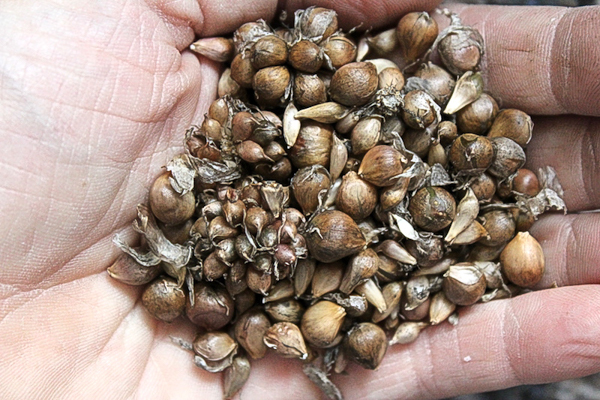
Table of Contents
(This article discusses top-setting garlic bulbils, which many people call “garlic seed.” They’re technically clones of the parent plant, rather than true seed produced by sexual reproduction and pollination. It is possible to produce garlic seed, but it’s quite tricky. That’s a different process, that’s much more complicated. If you’d like to learn the specifics, I have an article here on hand pollinating garlic to produce true garlic seed. For the rest of us, not all that concerned with the technical differences between bulbils and “true seed” I’m going to walk you through the easier bulbil method below.)
There’s a big difference between ‘garlic seed’ and ‘seed garlic.’ Most people plant seed garlic, and if you’re dealing with a reputable supplier, that means planting large well-formed garlic cloves from healthy disease-free stock.
More often than not, it actually means planting the garlic that feed stores buy from farmers that were too ugly or misshapen to be sold in a grocery store as cooking garlic. Garlic seed, on the other hand, is made in abundance after homegrown garlic plants flower in the late spring or early summer.
Northern gardeners know that garlic scapes are a real spring treat. After the garlic has grown tall and healthy, it sends out a coiling flower known as a garlic scape. Generally, those garlic scapes are cut off as soon as they appear because if the plant puts its energy into seed, it won’t produce a large bulb.
A densely planted garlic patch, with a plant every 4 to 6 inches means a lot of scapes to harvest. I harvest garlic scapes for stir-fries, omelets and garlic scape pickles. Every year, try as I might, I always miss scapes in the garlic patch.
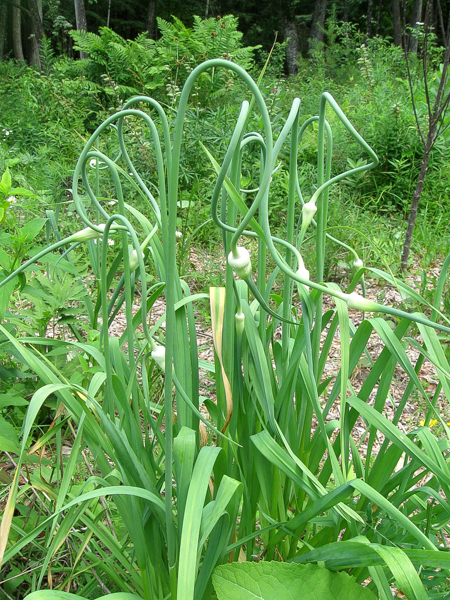
In late summer and early fall, they mature into heavy heads with small garlic bulbils and those are true garlic seed. While an heirloom hard neck garlic variety may only produce 4 to 8 large cloves to be saved for seed, it will produce somewhere between 20 and 100 little bulbils if the scapes are left intact. As you can see, growing and saving garlic seed instead of seed garlic pays back in huge dividends.
Each tiny garlic bulbil is like a miniature garlic clove and is in effect a garlic seed. The total amount of garlic seed produced depends on the variety, and types that produce huge numbers are favored by ‘seed garlic’ farmers that use the ‘garlic seed’ to grow out huge crops of garlic bulbs to sell to backyard gardeners as planting garlic cloves.
If you read through wholesale catalogs targeted at farmers, varieties will say “great for propagation, variety produces over 100 bulbils per plant.” Knowing that many commercial growers are taking the time to plant garlic seed rather than seed garlic drives home the point that it’s by far the most cost-effective way to propagate garlic.

Harvesting Garlic Seed
Start by leaving a few scapes on garlic plants in the spring. They’ll mature into garlic seed by the late summer, and be ready for harvest once they dry and the plant begins to die back. The garlic bulb at the base of the plant will still be usable and fully formed, but likely much smaller than the other bulbs nearby.
Break the bulbils apart and leave them to dry in a protected, well-ventilated area for a few days. Since they’re not underground they condition much faster than curing a garlic bulb. After a few days, store them in a cool, dry place out of direct sunlight until the fall.

Growing Garlic from Seed
Planting garlic seed is a bit different than seed garlic cloves. While seed garlic cloves will produce a harvestable crop the following year, garlic seed takes a bit longer before harvest.
The tiny bulbil is much smaller than a garlic clove, and the plant will need a full year to get established in the soil and grow to the size of a garlic clove. Another year later, it’ll produce a full harvestable garlic bulb.
Start by planting garlic seeds in the fall at the same time as your regular garlic bulbs. They should be kept separate because they’ll take extra time to mature and you’ll be disappointed if you accidentally harvest them with your garlic crop the summer following planting.
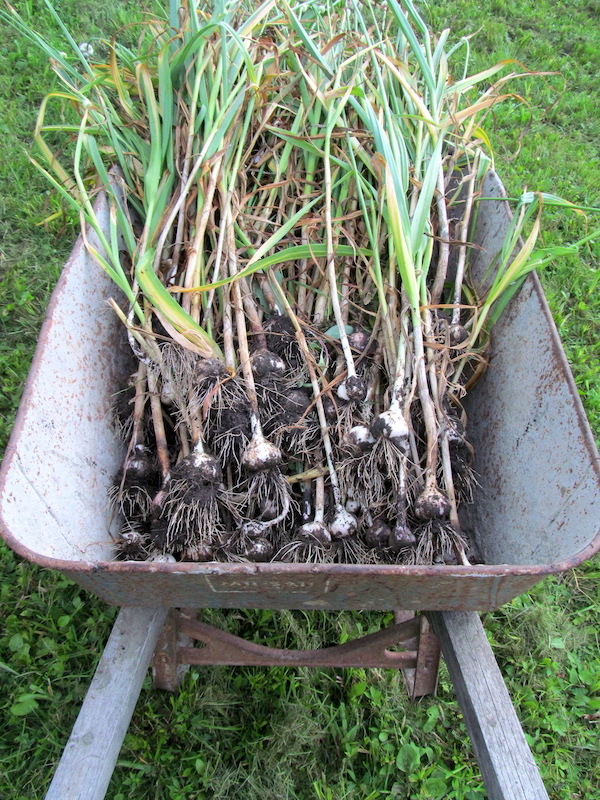
Garlic grown from bulbils can take up to three years to mature if the initial garlic seed was quite small. How big the bulbils are will depend on the garlic variety, and they range in size from large peas down to the size of a grain of rice. The largest specimens can produce harvestable garlic in as little as two years, while the tiny ones will need a full three years to mature.
In that time, they’ll mostly just need to be left alone. Keep them in a mulched, weed-free bed and quietly bide your time until the eventual harvest of a huge crop of nearly free garlic. Without the considerable expense of seed garlic, which generally sells for $3 to $5 per bulb, this harvest is almost free.
In the meantime, you essentially have perennial garlic that’s helping deter pests from the rest of your garden.
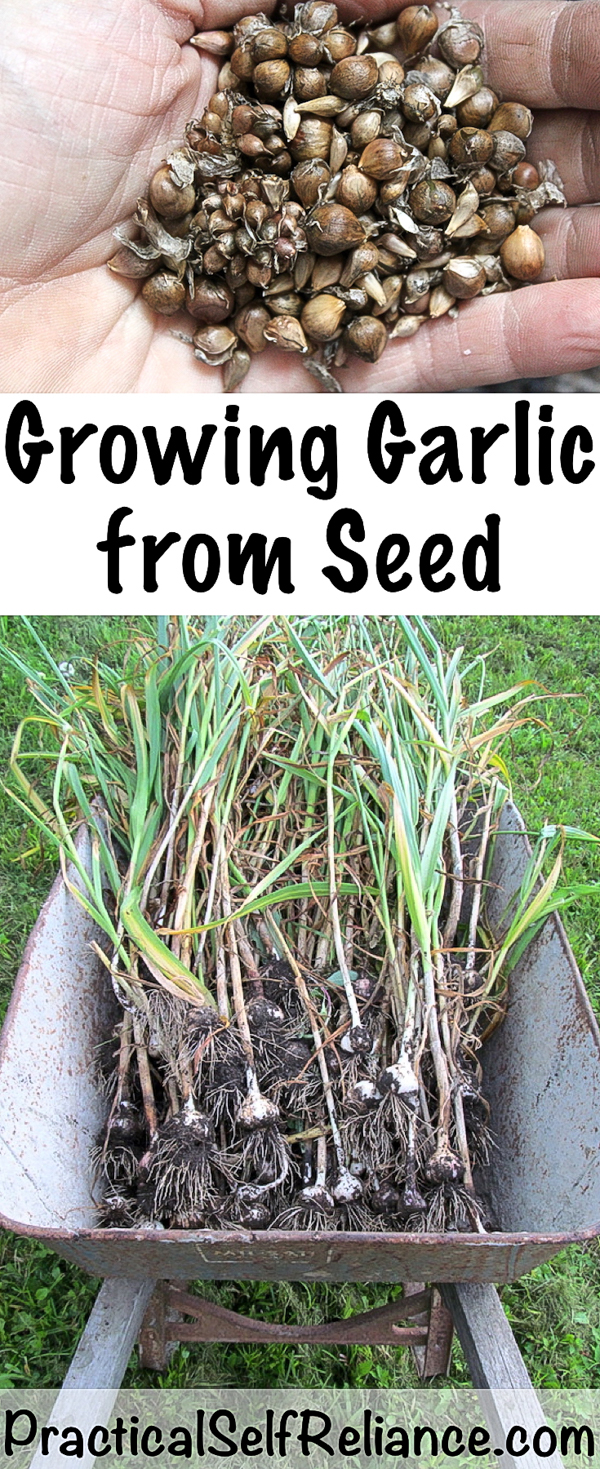
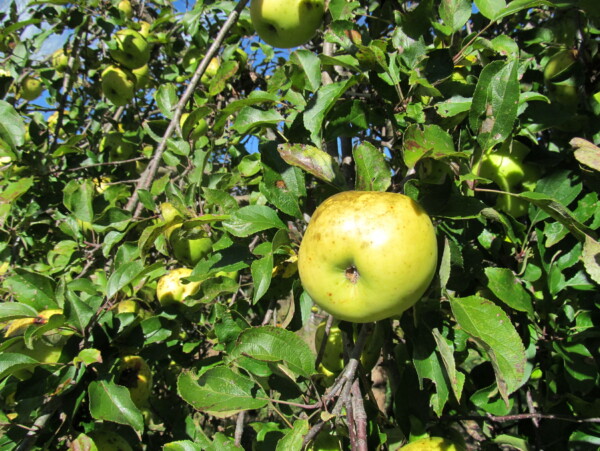
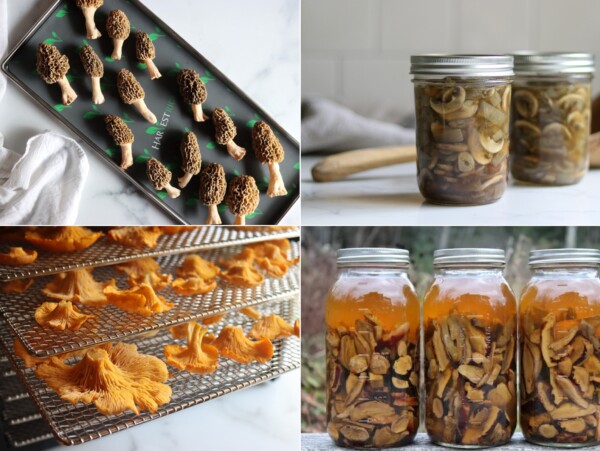
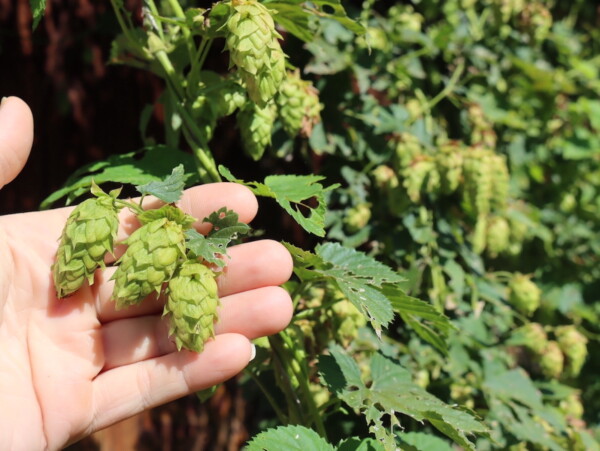
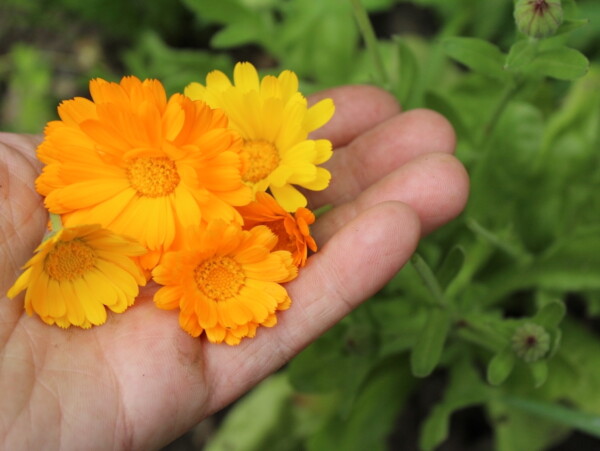










I want start growing garlic here in Malawi, what advice would you give me
Garlic is a cool weather crop, so you’d want to plant it just before the coldest part of the year there. I think people in California have special techniques that’d probably help you, as they have a similar climate. I’m in Vermont, very cold here, so my advice isn’t going to be quite right for your needs. Look up growing guides from the California University Extension system and they’ll be what you need.
Trying out planting bulbils this fall. Pointy side UP?? I’ll leave them in for 2 yrs come Spring.
Yes, pointy side up. Good luck!
Thank you so much for this easy-to-comprehend and informative answer to my question about the miniature garlic bulbs that came off the garlic I harvested and braided. I hope to plant them – in a place as you said – and leave them (weeding and composting along the way) for like 3 years. Sounds fabulous. Thanks again, and I hope you are living your dream life!
~ (Ms) Mo